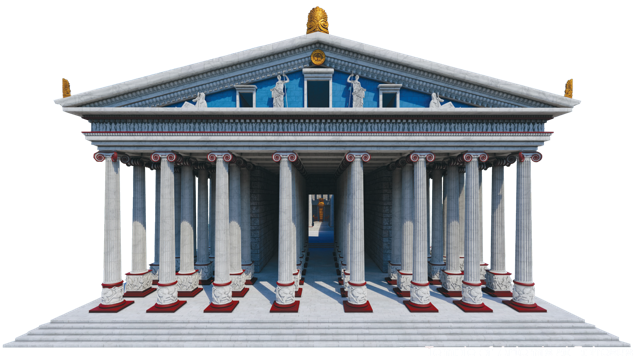- Home
- Architecture
Architecture

Architecture
The architecture of ancient Ephesus spans a broad timeline, from the Hellenistic period to the Roman and Byzantine eras, leaving behind a rich and diverse architectural heritage. These structures reflect Ephesus’s evolution as a significant cultural, religious, and commercial center throughout history. The architecture of Ephesus is evident in areas such as city planning, public buildings, religious structures, residential areas, and infrastructure systems.
City Planning:
Ephesus is an excellent example of advanced city planning in antiquity. The city was built according to a grid plan, with wide streets and alleys arranged in an orderly fashion. This layout made the city easy to navigate and accessible. One of the central thoroughfares, Curetes Street, connected the city’s most important public buildings and temples.
Public Buildings and Theaters:
Among the architectural marvels of Ephesus are prominent public buildings such as the Great Theater, the Library of Celsus, the Temple of Serapis, and the Fountain of Trajan. These structures played a central role in the city’s cultural and social life.
•The Great Theater: One of Ephesus’s most impressive structures, the Great Theater had a seating capacity of approximately 25,000 people. It was used for both theatrical performances and gladiatorial combats.
•The Library of Celsus: Built in the 2nd century CE, the Library of Celsus is considered the second-largest library of the ancient world. The facade of the structure showcases the refinement and grandeur of Roman architecture.

Religious Structures:
Ephesus is renowned for the Temple of Artemis, considered one of the Seven Wonders of the Ancient World. The city also housed other religiously significant sites, such as the Cave of the Seven Sleepers, which holds great importance in Christian history.
Residences and Social Life:
The residences in Ephesus reflect the disparities in wealth and social status. Luxurious villas built for the wealthy were equipped with features like mosaic floors, wall frescoes, and intricate water systems. The Terrace Houses are among the finest examples of residential structures belonging to the affluent and noble families of Ephesus.
Infrastructure and Other Structures:
Ephesus boasted an advanced infrastructure system. The city’s aqueducts, sewage systems, and public baths demonstrate the level of engineering and urban planning achieved in the ancient world.
Additionally, the Ephesus Harbor was another critical structure that enhanced the city’s significance in trade.
